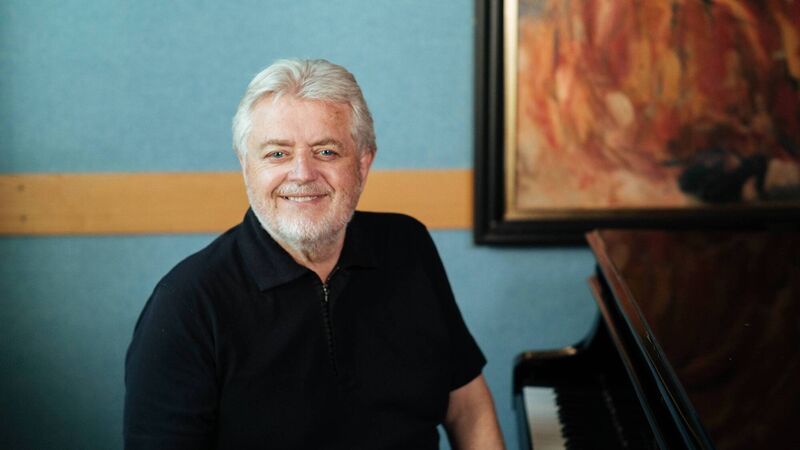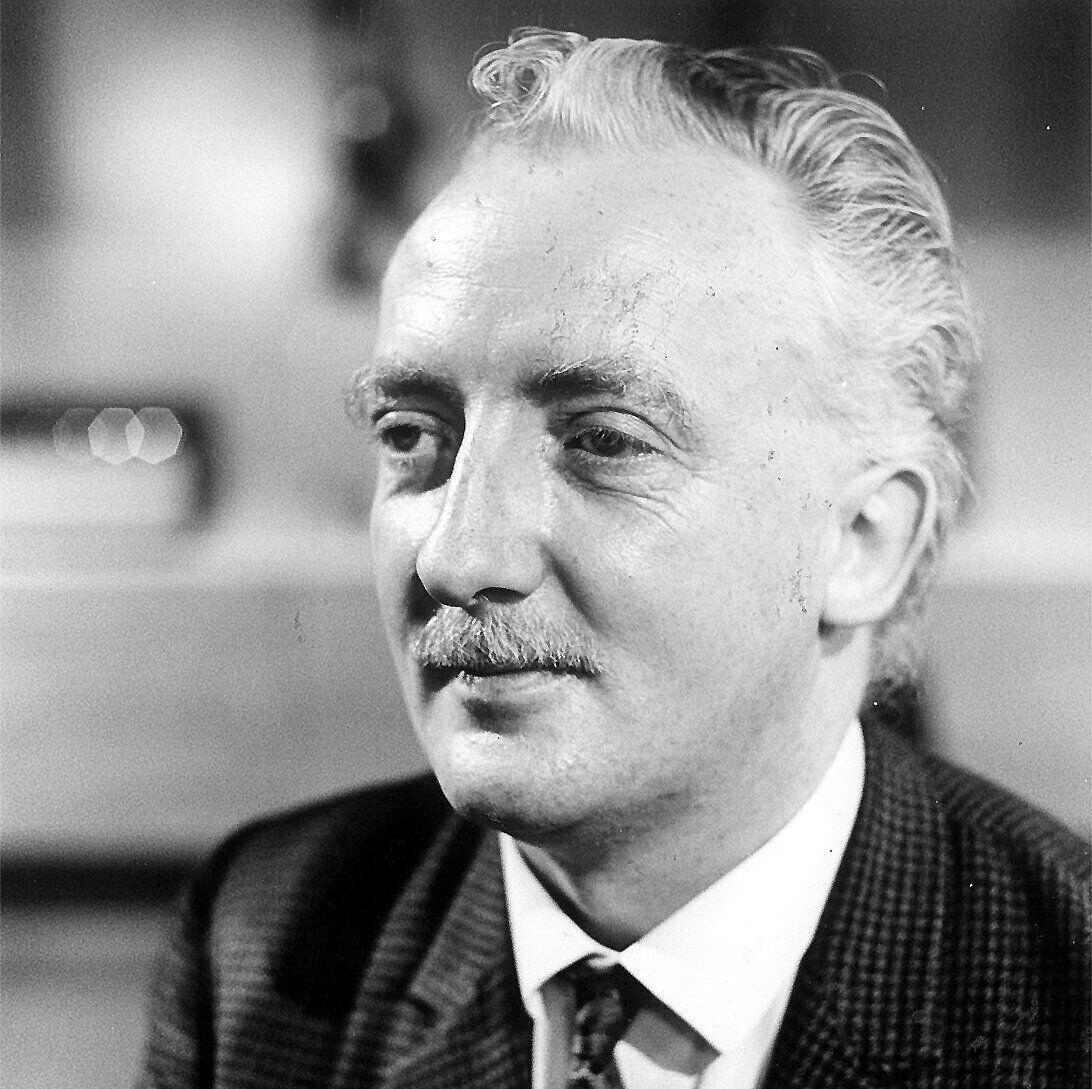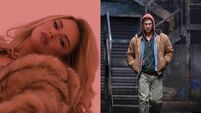Culture That Made Me: Bill Whelan on influences from Chaplin to the Beatles

Bill Whelan. Picture: Cathy Dunne
Bill Whelan, 75, grew up in Limerick City. As a producer, he has worked with U2, Kate Bush, Richard Harris and Planxty. He has scored music for numerous films, including Lamb, Dancing at Lughnasa and Some Mother’s Son. In 1994, he composed Riverdance, the interval music for the Eurovision Song Contest, which won him a Grammy Award. To celebrate his 75th birthday, there will be a concert featuring some of his most popular music and a new composition at Dublin’s National Concert Hall, 7.30pm, Friday, November 21. See: www.nch.ie.
The Golden City Dixies
When I was nine, my father took me to see The Golden City Dixies. They were a cultural outfit, on tour out of South Africa, all black. They played everything from pop music to South African traditional music. They were fantastic. My father went up to a pal of his, who was in the pit recording, after the show. He asked him for a copied tape of the gig, which he made the following day. I nearly wore out the tape. I can still sing one of the tunes that goes, “Dale-lalo-mum, do-sula-pop, sula-pop-si-cula-lu-pop, dale-lalo, mum-um-poo…” Here was something in a strange language, with rhythmic excitement to it. They also played hits like Moon River. They were gifted.
Thelonious Monk
My father had a mad interest in music and technology. He introduced me to all kinds of music. From the earliest time, I never saw the divide between musical genres. I’m not really a genre person. It was either good music – it moved you – or it didn’t. In my teens, I started listening to Thelonious Monk. His improvisations were so unlike what we were hearing in straight-ahead jazz – the Glenn Millers and all of that. It was bebop, melody was happening in odd places; there were odd intervals in the melody. It really challenged you.
The Beatles
My first real love was the Beatles. I had all the albums and took a deep interest in them. I joined a record club in the UK called the Heanor Record Centre. They sent out a very cheaply printed leaflet of what was coming up. I remember I got Sgt. Pepper’s Lonely Hearts Club Band in 1967 a week or two before everybody else in Limerick. I nearly had to hire security! After school, we would go to this guy’s house, his father had a good stereo system. We would sit down, about five or six schoolmates, and listen to Sgt. Pepper, slowing it down, playing bits backwards, looking for stuff. You had to “get in deep” – a deep dive to find out, say, what did “Lucy in the sky with diamonds” mean. Did it mean LSD?
One Flew Over the Cuckoo’s Nest

When I was in my teens, I read Ken Kesey’s One Flew Over the Cuckoo’s Nest. It grabbed me because it redefined our view of mental illness and the treatment of mental health, and how important mental health was and how treating it as Nurse Ratched did as a control thing is not a way towards getting well.
Charlie Chaplin

My father bought a 16-millimeter projector. We had films in the house. He joined a film club in Dublin. On Saturdays I went up to the railway station and collected these boxes of films, all these old movies I loved. We saw a lot of Charlie Chaplin (left) . I loved Chaplin – his humour and the theatre of him.
Frank Zappa
Frank Zappa’s adventurousness and his musical curiosity was something I related to. He had a lively musical brain that caught my imagination and interest. I loved the musical anarchy of it, the fact there were avenues that nobody went down, that you could go down with Zappa.
He did a thing called Lumpy Gravy, which had a mixture of orchestral stuff and a rhythm section. He had this lovely sideways wit, which informed the music. His album We’re Only in It for the Money had them all in dresses on the album sleeve, as a satire on the Sgt. Pepper’s album cover.
Dave Brubeck
Apart from being a great pianist, Dave Brubeck (above right) did things like Blue Ronda à la Turk, all those mixed rhythms, that to me was very stimulating. It was the first time we heard 5/4 as a time signature. It was in 5, which is not natural to us – here in Western Europe, we’re 4/4 or 3/3 people. Here was this thing that was grooving in 5.
The elemental part of your body, which might inform your dance if you were a dancer, was being stimulated by the brain, the more analytical part. Both of those were operating together.
That was fantastically interesting.
Rory Gallagher
I remember seeing Rory Gallagher in Limerick’s Savoy. I couldn’t believe what a fantastic guitar player this guy was. I was about 15. It must have been 1965. It was amazing – seeing that level of musicianship, and when you see it live, it makes you feel like you can touch it. It wasn’t something coming down a television tube. It was real and it was there. There’s nothing like live music.
The Bothy Band
Growing up, there was a distinction between folk and trad. Trad was about musicians playing tunes, purely Irish dance music, slow airs or sean-nós singing, whereas folk was songs. Seeing what was happening with, say, Sweeney’s Men and The Bothy Band was interesting. The music of James Taylor and stuff going on in America I’d been listening to up until then was suddenly not so far away from trad music because the link was the accompaniments of Dónal Lunny,
Andy Irvine, Johnny Moynihan. I remember seeing the Bothys live in the 1970s. I felt a pull. I got it. I could see the route. It was understandable to me. It made it cool. Here was a way to create harmonic accompaniments to tunes that normally you would only hear in a céilí band where the only one playing accompaniments was the piano. This was like playing something much more interesting.
Mise Éire

One of the first movies I remember seeing was Mise Éire. Here was music – an old tune, Róisín Dubh – set against a film about Irish history, the 1916 revolution and afterwards. It wasn’t just somebody with the tin whistle. Here was a big orchestra playing a traditional Irish tune. This is what Seán Ó Riada did – he made this link between trad music and the wider world. He took trad music out of the kitchen and put it on the concert stage. He made Irish film music sound like the big orchestral music we heard from American composers like Elmer Bernstein and Leonard Bernstein.
Here comes the cavalry
Growing up in Limerick, we were surrounded by cinemas. In 10 minutes’ walk I could be in five cinemas. We went to see westerns a lot. Fellas in Limerick used to say, “The Indians had their wagons completely surrounded, right? Next minute, over the hill, come the Dantarans.” We’d say, “Who were the Dantarans?” We’d be told: “They were the cavalry coming over the hills. Dan-tar-an, dan-tar-an.”

Unlimited access. Half the price.
Try unlimited access from only €1.50 a week
Already a subscriber? Sign in



